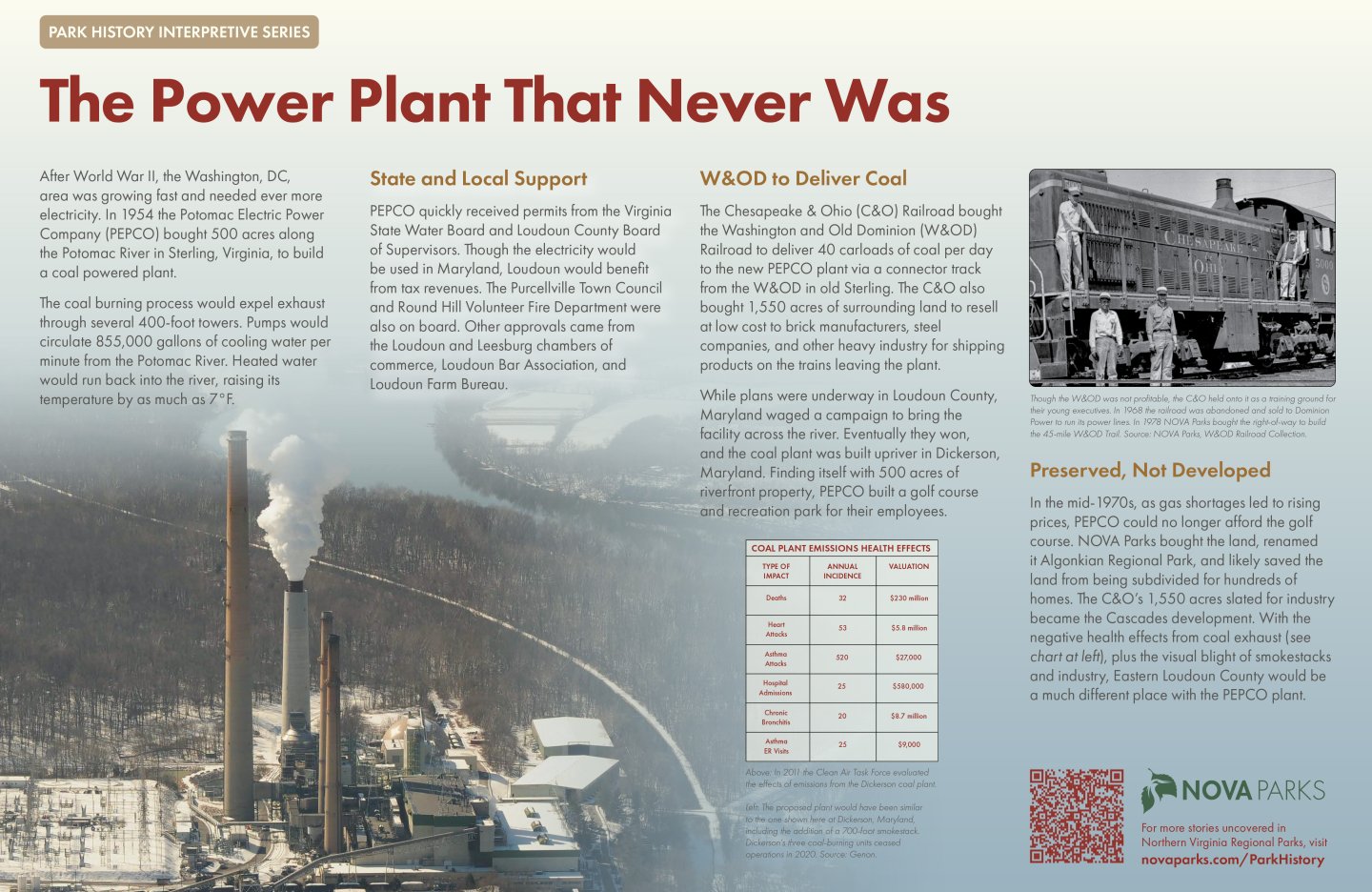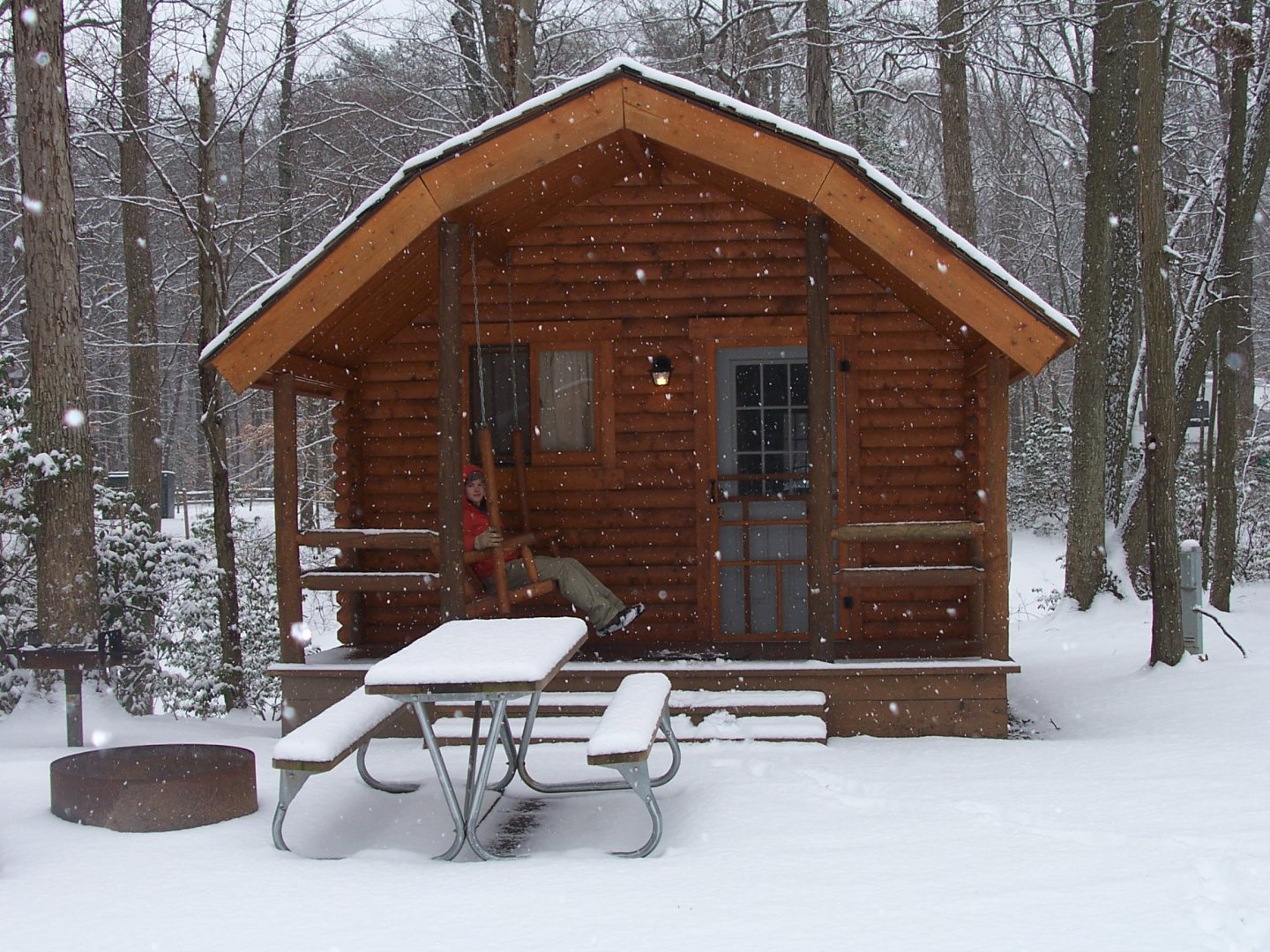Algonkian Regional Park
Park History Interpretive Series: The Power Plant That Never Was

After World War II, the Washington, DC, area was growing fast and needed ever more electricity. In 1954 the Potomac Electric Power Company (PEPCO) bought 500 acres along the Potomac River in Sterling, Virginia, to build a coal powered plant.
The coal burning process would expel exhaust through several 400-foot towers. Pumps would circulate 855,000 gallons of cooling water per minute from the Potomac River. Heated water would run back into the river, raising its temperature by as much as 7°F.
State and Local Support
PEPCO quickly received permits from the Virginia State Water Board and Loudoun County Board of Supervisors. Though the electricity would be used in Maryland, Loudoun would benefit from tax revenues. The Purcellville Town Council and Round Hill Volunteer Fire Department were also on board. Other approvals came from the Loudoun and Leesburg Chambers of Commerce, Loudoun Bar Association, and Loudoun Farm Bureau.
W&OD to Deliver Coal
The Chesapeake & Ohio (C&O) Railroad bought the Washington and Old Dominion (W&OD) Railroad to deliver 40 carloads of coal per day to the new PEPCO plant via a connector track from the W&OD in old Sterling. The C&O also bought 1,550 acres of surrounding land to resell at low cost to brick manufacturers, steel companies, and other heavy industry for shipping products on the trains leaving the plant.
While plans were underway in Loudoun County, Maryland waged a campaign to bring the facility across the river. Eventually they won, and the coal plant was built upriver in Dickerson, Maryland. Finding itself with 500 acres of riverfront property, PEPCO built a golf course and recreation park for their employees.
Preserved, Not Developed
In the mid-1970s, as gas shortages led to rising prices, PEPCO could no longer afford the golf course. NOVA Parks bought the land, renamed it Algonkian Regional Park, and likely saved the land from being subdivided for hundreds of homes. The C&O’s 1,550 acres slated for industry became the Cascades development. With the negative health effects from coal exhaust (see chart at left), plus the visual blight of smokestacks and industry, Eastern Loudoun County would be a much different place with the PEPCO plant.


